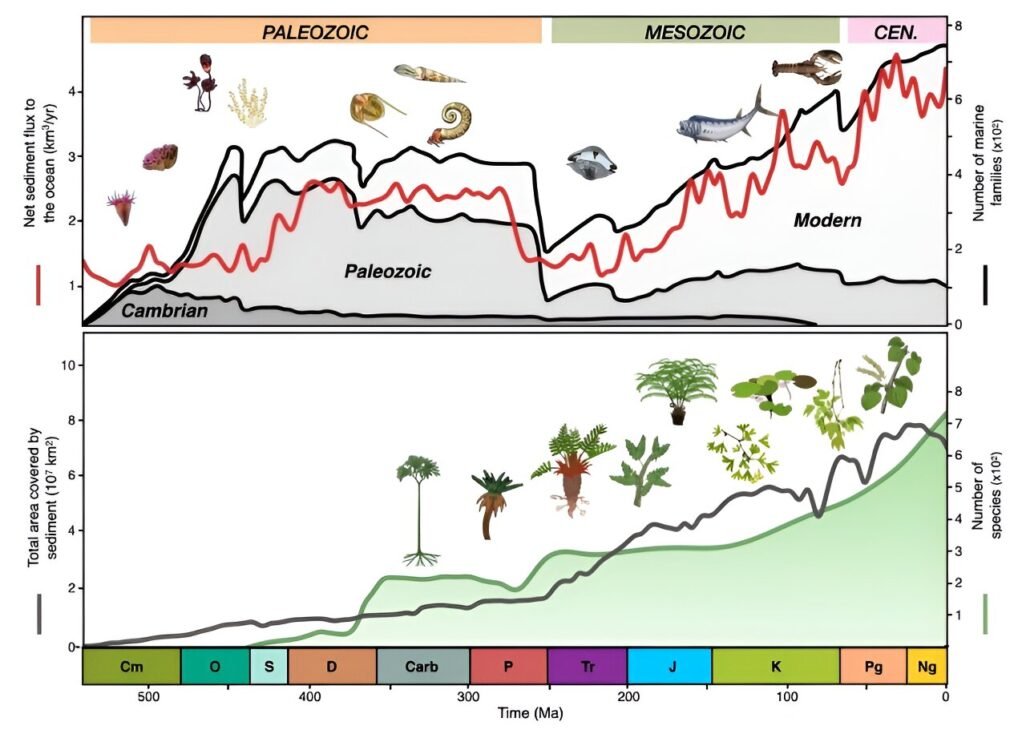Key Takeaway
The research emphasizes that landscape dynamics, including the movement of rivers, mountains, oceans, and sediment nutrients at geological timescales, play a crucial role in determining Earth’s biodiversity evolution. The study reveals a correlation between sediment fluxes and the diversity of marine animals and plant species over the past 540 million years.

In a groundbreaking study recently published in Nature, scientists have delved into the intricate relationship between Earth’s dynamic landscapes and the evolution of biodiversity. This comprehensive research sheds light on the crucial role played by the movement of rivers, mountains, oceans, and sediment nutrients over geological timescales in shaping the diverse tapestry of life on our planet.
The pace of biodiversity evolution is unveiled to be in tandem with the gradual geological processes, such as plate tectonics, which intricately sculpt the Earth’s continents, mountains, and oceans. This extensive study spans an impressive 500 million years, focusing on the period following the Cambrian explosion, a pivotal era that laid the foundation for the emergence of key species in modern life.
Earth’s surface, aptly described as the living skin of the planet, undergoes continuous evolution as rivers intricately fragment landscapes, giving rise to a multitude of habitats. The research challenges traditional perspectives on global biodiversity by introducing a novel model that seamlessly integrates physical, chemical, and biological systems over an expansive timeframe, providing a holistic understanding of the forces driving species diversity.
This study places significant emphasis on the holistic interplay of time, geology, hydrology, climate, and genetics in the intricate web of biodiversity and species survival. This is exemplified by the discovery of the ancient Wollemi pine species in 1994, serving as a tangible representation of how time, geography, climate, and genetics collectively influence the survival of distinct species.
The collaborative efforts of a distinguished team of scientists from the University of Sydney, ISTerre at CNRS, and the University of Grenoble Alpes have resulted in a unified theory that links the evolution of both marine and terrestrial life to sediment pulses controlled by past landscapes. Unlike conventional approaches that consider environmental factors in isolation, this model intricately combines various elements, offering a nuanced simulation of their compounded effects.
Utilizing advanced computer simulations calibrated with contemporary data on landscape elevations, erosion rates, and sediment transport, the researchers unveil a compelling positive correlation between sediment flux into oceans and the richness of marine biodiversity. A parallel correlation is discerned on land, connecting sediment cover, landscape variability, and the diversification of plant life.
This study seamlessly aligns with historical observations made by eminent naturalists such as Alexander von Humboldt, Charles Darwin, and Alfred Wallace, who astutely recognized the intrinsic link between landscape discontinuities and the boundaries of animal species.
By unraveling unprecedented insights into the intricate relationship between Earth’s surface evolution and biodiversity, this research significantly contributes to our broader understanding of the nuanced mechanisms governing the evolution of diverse life forms over time.
A captivating reference to Jules Verne’s timeless novel, “A Journey to the Centre of the Earth,” serves to underscore the study’s findings, drawing attention to the remarkable correlation between sediment deposition by rivers and the flourishing of animal life on Earth.











